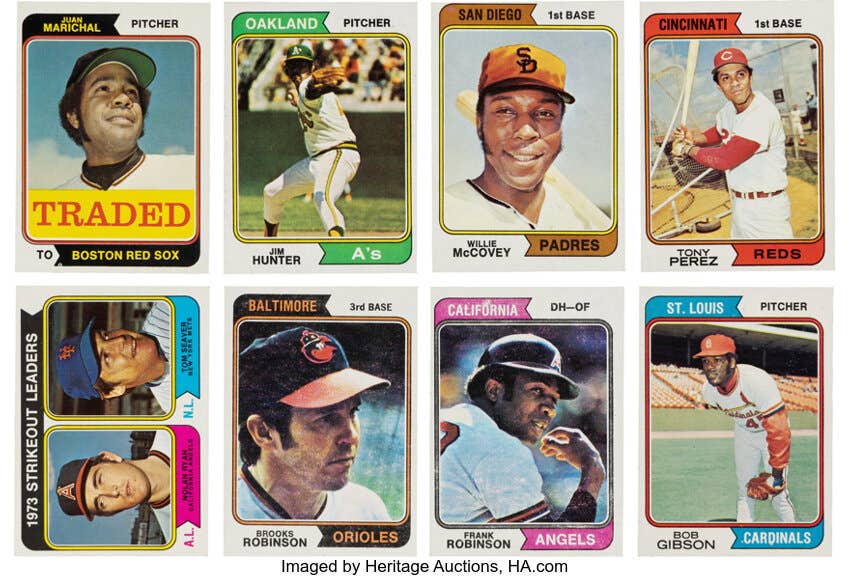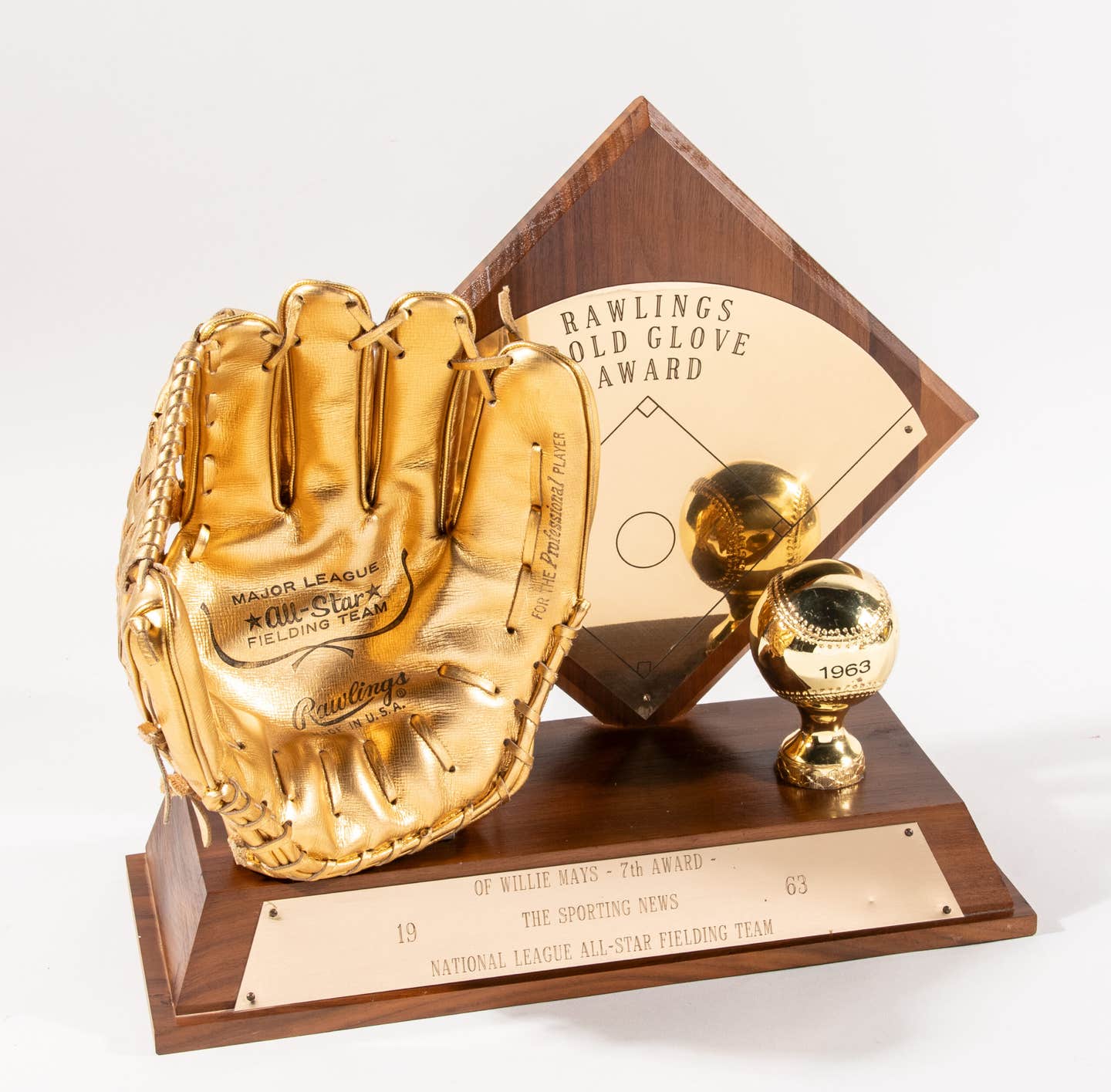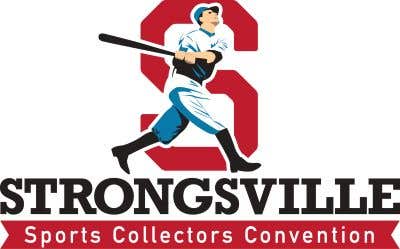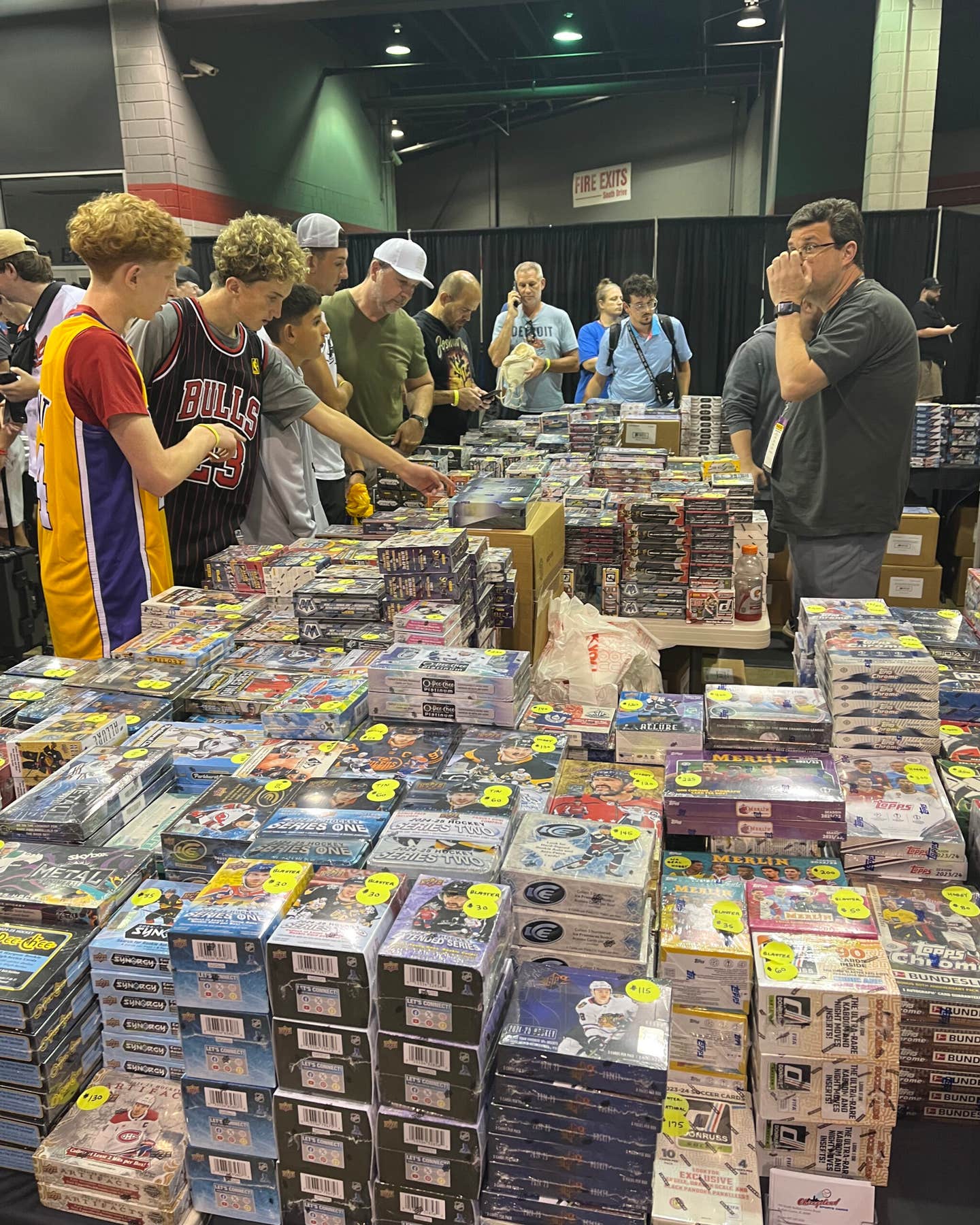
News
1974 Topps series, first factory set changed landscape of baseball cards
The country was suffering through an oil crisis. The Watergate scandal brought down President Nixon. Barbra Streisand sang, “The Way We Were,” and the Oakland A’s won the World Series, beating the Los Angeles Dodgers in five games.
It was also a year when the Topps flagship baseball set forever changed the card landscape. With its classic design, key rookies and plenty of Hall of Famers, this set is considered one of the best from the 1970s and continues to be very collectable 50 years later.
The set was made up of 660 base cards. It also marked the first time Topps released their flagship set all at once and not through several series. Topps’ decision to modify the release schedule was to prevent their baseball product from competing with its football set. Late-season baseball card sales had typically dipped in the fall. Topps even used the red packs the cards came in to proclaim, “All 660 cards in one series!”
Topps distributed the cards in three packaging options. Collectors could buy wax packs (10 cents), cello packs (25 cents) and rack packs (39 cents). That year also marked the first time Topps sold a complete factory set exclusively through the JC Penny’s department store catalog. It was an experiment that didn’t stick. Another Topps Baseball factory set would not be made available again until 1985.
A bonus to purchasing the completed box was the inclusion of the first-ever Traded set, which featured 44 cards of players who had switched teams that season. Those same cards had also been randomly inserted into packs.
SPECIAL AARON CARDS
Anchoring the checklist is Hank Aaron. The Atlanta Braves slugger occupies the first six cards on the checklist. The previous season, Aaron smacked 40 home runs in 392 at-bats, ending the 1973 season one home run short of the all-time record.
Aaron hit home run No. 713 on Sept. 29, 1973, with a day left in the regular season. Despite receiving death threats, Aaron would break Babe Ruth’s all-time record of 714 home runs on April 8, 1974.
Card No. 1 remains one of the most iconic. It is a horizontal card featuring a photo of a smiling Aaron, a small crown and the phrase, “New All-Time Home Run King.” Raw versions can sell for hundreds of dollars. High grades can go for thousands.
The next five are known as “Hank Aaron Special” cards. They are a compilation of past Aaron cards Topps had produced—four images per card—between 1954 and 1973.
VARIATIONS AND ERRORS
The set also features variations and errors—and not because of anything Topps did.
The backstory of why the set featured such cards dates back to 1971. At Major League Baseball’s winter meetings in Phoenix that year, four lawmakers presented a petition signed by 238 House members calling on MLB to reestablish a baseball team in Washington.
In May 1973 came word that an investment group, led by supermarket tycoon Joseph Danzansky, had a deal to buy the San Diego Padres and move them to the nation’s capital, hinging on the team terminating its lease with city-owned San Diego Stadium and on the approval by a majority of NL owners. The Padres ownership at the time was more than happy to sell the franchise given its financial struggles.
“Baseball’s Back! San Diego Padres Play Here in ’74,” a front-page headline in The Washington Post trumpeted on May 28, 1973, near a story about the then-worsening Watergate scandal.
The Padres finished the 1973 season with an NL-worse 60-102 record. Nixon, a baseball fan, cheered the Padres’ imminent move to D.C. It seemed all but certain the Padres would move. As a result, the initial production run of 1974 Topps Baseball cards featured Padres players playing for Washington in the National League.
At the last minute, the Padres remained in San Diego after businessman Ray Kroc, famous for being the founder of McDonald’s, purchased the team. Kroc's ownership stabilized the franchise, averting relocation.
That forced Topps into having to scramble. Subsequent production runs were printed with the corrected team name and information. As a result, the set has 18 variations. The value of these 18 cards far outweighs the names of the players that appear on them, making them some of the most-sought after errors in the hobby.
ROOKIES AND HALL OF FAMERS
The notable rookie cards are Dave Winfield (#456), Dave Parker (#252), Ken Griffey, Sr. (#598), Bucky Dent, (#582), and Frank Tanana (#605).
Winfield, a member of the Padres at the time, remains the biggest. It should be further noted that any Padres cards produced after No. 400 weren't affected by the Washington printing blunder, so the Winfield rookie does not have a corrected error version.
Winfield was inducted into the Hall of Fame in 2001. That also makes him one of a long list of notable Hall of Famers in this set, including Johnny Bench (#10), Nolan Ryan (#20), Jim Palmer (#40), Rod Carew (#50), Frank Robinson (#55), Tom Seaver (#80), Joe Morgan (#85), Carlton Fisk (#105), Reggie Jackson (#130), Mike Schmidt (#283), and Bob Gibson (#350).
The set also features the final regular issue cards of Luis Aparicio (#61), Orlando Cepeda (#83) and Al Kaline (#215), all Hall of Fame members.
Clemente Lisi








